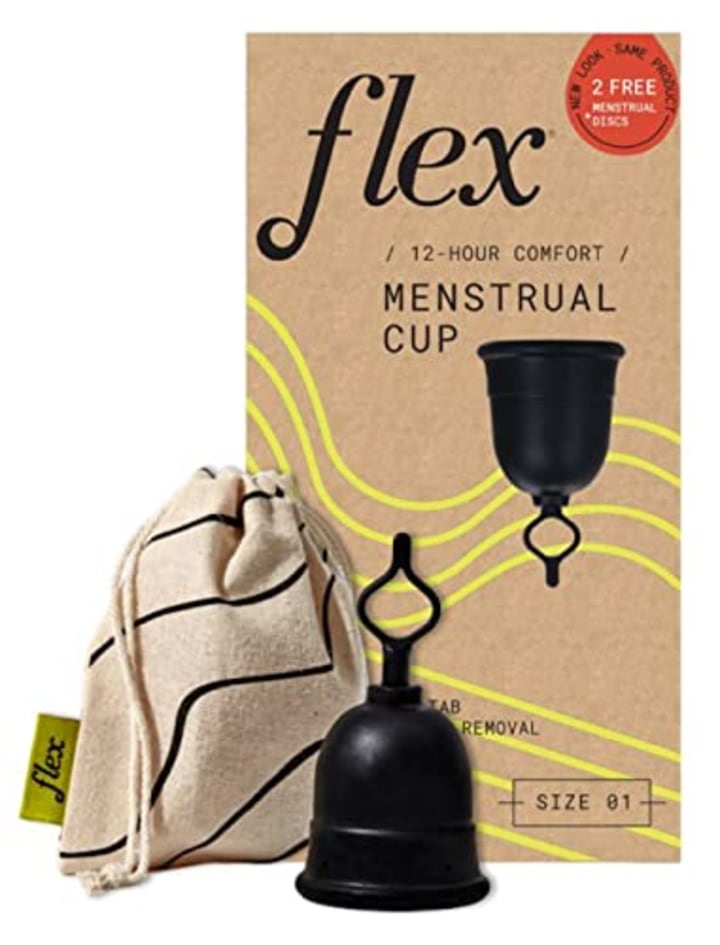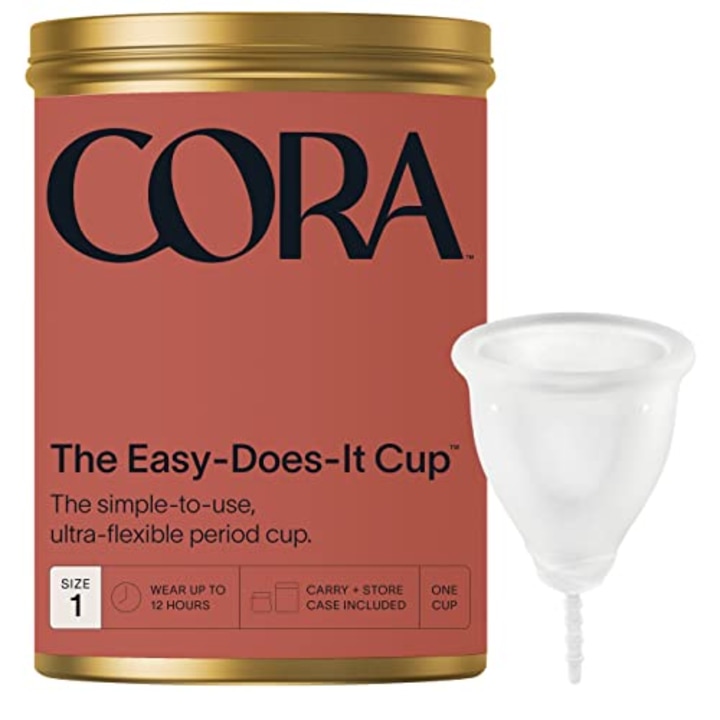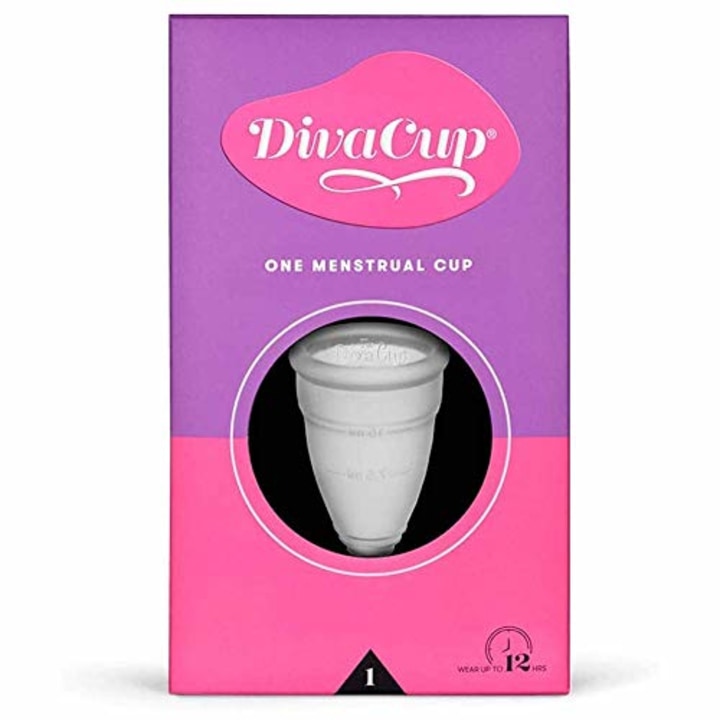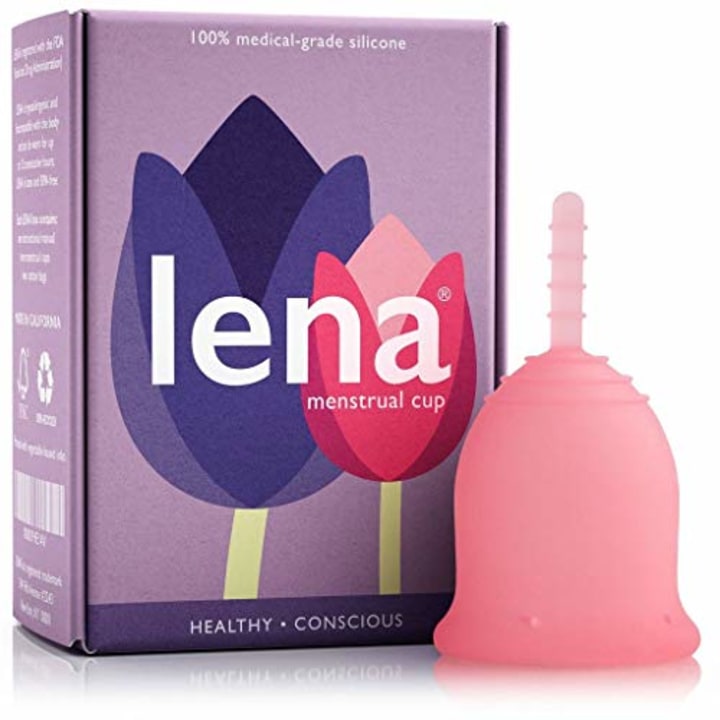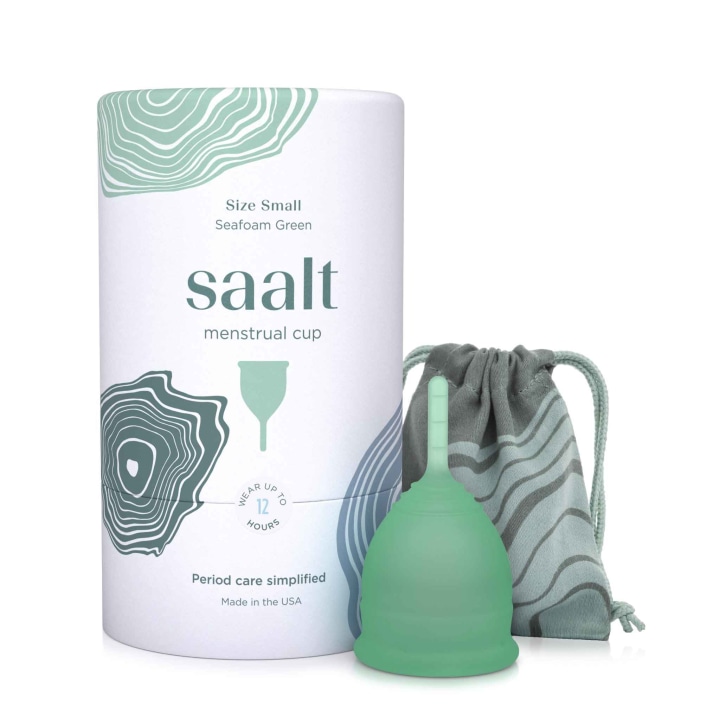Period products have come a long way over the past several decades. Today, those who menstruate can choose from alternatives like period underwear, reusable cloth pads and menstrual cups, depending on their preferences. The rise in alternative period products can be attributed to several things, including the desire for more comfortable and cost-effective devices. A “wider menstrual discourse” has also changed the period product landscape, said Chris Bobel, PhD, a professor of women's, gender, and sexuality studies at the University of Massachusetts in Boston.
SKIP AHEAD Best menstrual cups | Who should use menstrual cups? | Are menstrual cups safe to use? | How to clean your menstrual cup
“As folks begin to talk more openly and more often about menstruation and menstrual health, they [discuss] options beyond what they once assumed to be the one and only method of care — typically commercial pads and tampons,” she said.
Menstrual cups in particular are having a moment, with search interest growing extensively in the past decade. “There is wider accessibility of many of these products, such as cups for sale in chain stores,” Bobel said. While menstrual cups are still not quite as popular as pads and tampons, there is no doubt that there is growing interest in them — major period care brands like Tampax have released their own versions of the product to meet the demand.
To determine if a menstrual cup is a right fit for you, we consulted women’s health experts to discuss how they work, how to use them and who can benefit from wearing them. We also rounded up menstrual cups recommended by our experts
What are menstrual cups and how do they work?
Menstrual cups are soft, reusable cups typically made of medical-grade silicone. While they’ve gained popularity in recent years, menstrual cups aren’t new: According to the Museum of Menstrual History, commercial menstrual cups date back to the 1930s, which is also around when the first commercial tampon was introduced. The menstrual cup performs essentially the same function as a tampon — it collects menstrual blood when inserted into the vagina, which is typically done by folding the cup.
Compared to other single-use period products on the market, menstrual cups are relatively cost-effective. They cost anywhere between $25 to $40 and they can last between six months and several years with proper care and cleaning, according to the experts we spoke to. (You’ll want to pay attention to any signs of deterioration like tears or cracks in the material.)
“They're a much better investment than any single-use period products — repurchasing a box of tampons every month very quickly gets more expensive than buying a menstrual cup for $25,” said Dr. Mare Mbaye, an OB/GYN based in New York. They are also more environmentally friendly: The ease of disposal that makes pads, tampons and panty liners so appealing results in a great deal of plastic waste both in their packaging and the material used to make them — an important consideration when the average menstruating person uses between 5,000 and 15,000 disposable pads and tampons in their lifetime.
Menstrual cups have several tampons worth of capacity — an average cup can hold around 30-35 milliliters of fluid and even upwards of 50 milliliters for certain brands compared to 3 milliliters for a regular tampon and 12 milliliters for a super tampon — so they don’t have to be changed as frequently as single-use period products. The American College of Obstetricians and Gynecologists advises emptying and washing out your menstrual cup every eight to 12 hours based on your flow (most menstrual cups have a pull tab or a stem that you can use to get them out). However, if your flow is heavier, “you might need to change it more frequently to prevent leaks,” noted Mbaye.
Best menstrual cups to shop
Menstrual cups usually come in a few different sizes that typically depend on your flow and whether you have previously given birth. Below, we compiled some expert-recommended options to shop, all of which come with at least two sizes to choose from, can be worn for up to 10-12 hours and are made from medical-grade silicone. Our experts recommended testing out the size and fit of a menstrual cup before settling on a specific model — all of the options below come with a guarantee policy that lets you exchange your cup for free or at a discounted price.
Flex Cup
Dr. Alexandria Reyes, a board-certified OB/GYN and founder of Magnolia Gynecology in Tampa, Florida, recommended the Flex Cup due to its unique pull tab, which “makes it easy to get in and out,” she said. She noted that the black color helps prevent visible stains and, like the other options on this list, it can be used for up to 12 hours. The Flex Cup comes in two fits: Slim Fit, which has a 22-milliliter capacity, and Full Fit, which has a 30-milliliter capacity. The brand recommends the Slim Fit for first-time menstrual cup users and for those with both light and heavy flows, while the Full Fit is recommended for those who prefer a larger size and who have had two or more vaginal births. Reyes also recommended the Flex Disc (which the brand says has a 60-milliliter capacity) for people who prefer a higher fit by the cervix.
Cora Cup
The Cora Cup is Mbaye’s pick for first-time users — “it’s one of the easiest to fold, insert and remove,” she said. The cup has an intuitive indent on the side that helps you properly fold and insert it, and it also comes with a vegan leather clutch to store it once it’s clean and completely dry, according to the brand. You can choose from two sizes: Size 1 is recommended for those who haven’t given birth and don’t experience bladder leaks, while Size 2 is best for users with a medium to heavy flow, as well as for people who have given birth.
DivaCup
The highly rated DivaCup is one of our favorite sustainable bathroom products. The brand says the cup is made without chemicals, dyes or plastic, and it comes in multiple sizes ranging from 0 to 2 — the size you need relies on how light or heavy your flow is. However, Mbaye doesn’t recommend this one for first-time users: As one of the longest cups available, it has a large capacity but can sometimes be uncomfortable for those with a shorter vaginal canal, which Mbaye said is mostly due to genetics and simply means you’ll need to be “more cognizant of what is most comfortable when choosing a menstrual cup.”
MeLuna
Mbaye recommended the MeLuna if you’re looking for a customizable cup that comes in a variety of sizes and styles to fit your needs. “When you’re trying to figure out what works best for you, you can change one variable at a time — size, shape or firmness — if a cup isn't right, instead of starting all over again,” she said. You can choose between the Classic or Shorty (the latter is a smaller cup for people with low cervixes), as well as softer and firmer cups, three stem styles and sizes ranging from Small to Extra Large. MeLuna recommends wearing its cup for up to 10 hours.
Lena Cup
For people who have had vaginal births, Mbaye said the Lena Cup “may be a better option because its wider design allows for a better seal, meaning less leaks.”If you’re using a menstrual cup for the first time, the brand recommends the Lena Small size regardless of your flow. Lena Large is recommended for more experienced users looking for additional capacity.
Saalt Cup
Saalt is a women-owned brand that makes some of our favorite period underwear. Their menstrual cup can be worn for up to 12 hours and is reusable for up to 10 years, according to Saalt. Made of medical-grade silicone, the Saalt Cup comes in both a regular size, which the brand says can hold the same as up to four tampons, and a small size, which can hold up to three tampons-worth of blood. You can choose from three colors: Seafoam Green, Ocean Blue and Himalayan Pink. The brand also offers a Teen Cup — which the brand says is smaller than the original cup — and a Soft Cup for those with a history of bladder sensitivity, cramping or discomfort with firmer cups, according to Saalt.
Who should use menstrual cups?
Experts agree that most people who menstruate can benefit from using a menstrual cup, though it may be necessary to try a few products until you find the one you like the most. There are multiple sizes of menstrual cups available, and which one you’ll need will usually depend on your flow and whether you’ve previously given birth, said Mbaye. (Brands will typically list size guides to determine which fit is best for you.)
If you're trying to decide if a menstrual cup is right for you, Mbaye recommended asking yourself a few questions:
Is a menstrual cup going to be cheaper than other options? (If you get your period once in a while or have a very light flow, consider whether the upfront cost of a menstrual cup might be more than a pack of pads or tampons.)
Are you comfortable using it?
Does it make sense with your lifestyle? For instance, if you’re using public restrooms for most of the day, would you be comfortable emptying and washing it in that setting?
Menstrual cups do have some drawbacks — and they aren’t for everyone. As Bobel pointed out, the biggest concern is the learning curve for effective use “that can be tough, especially if you are someone who is not comfortable with their anatomy.” The most common complaint Mbaye hears from her patients is that it can be very messy and the removal and reinsertion can sometimes be tough in the beginning — however, she said most report that this improves after continuous use. But there are other aspects that can be difficult for people to look past, including high upfront costs and the slightly uncomfortable process of inserting and removing the device.
“Some folks balk at having to empty the cup. How do you do that at school, at work? For some menstruators, it’s not, or at least does not seem to be, practical to use a reusable product [and] disposability is much more convenient,” Bobel added.
Leaking in the beginning can also be common for some, especially if you’re just starting to figure out which menstrual cup fits you best, said Reyes. “I suggest a panty liner or pad in the first days of learning how to use a menstrual cup for backup.”
Reyes noted that you shouldn’t use a menstrual cup “if you’re pregnant and bleeding, or just for discharge.” Our experts also recommended avoiding them if you’re allergic to the material — rubber or silicone — or if you notice recurrent vaginal irritation when using the cup.
Menstrual cups versus menstrual discs
If you’ve looked into menstrual cups, there’s a good chance you’ve come across menstrual discs. Reusable discs work very similar to cups: They’re both usually made from medical-grade silicone and are designed to collect menstrual blood (though unlike cups, discs also come in disposable form). “[A disc] sits a little bit higher in the vagina than a cup, which forms like a seal around the cervix,” explained Dr. Tina O’Shea, assistant professor in the department of obstetrics and gynecology at the University of Florida College of Medicine. Similar to a menstrual cup, they have to be washed at least once every 12 hours — but the biggest difference is that you can actually have intercourse with the disc in place since it lacks a stem and sits higher, O’Shea added.
Are menstrual cups safe to use?
Menstrual cups are considered a Class II medical device by the Food and Drug Administration, meaning that rather than the agency testing each cup individually, manufacturers must assert that their products have the same design and function as those already cleared for sale by the FDA. Thus, while menstrual cups aren’t technically approved by the FDA, they can be “FDA cleared,” just like sanitary pads and tampons, which fall under Class I and Class II medical devices, respectively.
A 2019 comprehensive analysis by peer-reviewed medical journal The Lancet confirmed the safety of menstrual cups, calling them “an effective and safe alternative to other menstrual products.” The study found that these cups had no negative effect on vaginal microflora and were not associated with abnormalities in the vagina or cervix. The paper also found they’re as likely, if not even more likely, to prevent leaks compared to tampons and pads.
How to clean your menstrual cup
Mbaye pointed out that vaginal irritation and even infection can occur if the cup isn’t properly cleaned during daily changes. When you do change it out, “it should be washed with mild, water-based soap and water and wiped clean before being reinserted, preferably at least twice a day,” Mbaye said. Reyes suggested emptying out the menstrual cup in the shower and rinsing it off with a hand sprayer, especially if it’s your first time using one and emptying it out.
Between periods is a great time to ensure your cup is being properly cleaned and sanitized to lengthen its lifespan. “The cup should be sanitized by rinsing it thoroughly, then boiling it for a few minutes. After the cup has been boiled, set it aside to completely cool down and dry off,” said Mbaye. Keep in mind, you should always clean the cup according to the manufacturer’s directions.
Meet our experts
At Select, we work with experts who have specialized knowledge and authority based on relevant training and/or experience. We also take steps to ensure that all expert advice and recommendations are made independently and with no undisclosed financial conflicts of interest.
Chris Bobel is a professor of women's, gender, and sexuality studies at the University of Massachusetts, Boston.
Dr. Mare Mbaye is an OB/GYN based in New York City and medical director at inclusive health care platform Noula.
Dr. Alexandria Reyes is a board-certified OB/GYN and founder of Magnolia Gynecology in Tampa, Florida.
Dr. Tina O’Shea is a board-certified OB/GYN and an assistant professor in the department of obstetrics and gynecology at the University of Florida College of Medicine.
Catch up on Select's in-depth coverage of personal finance, tech and tools, wellness and more, and follow us on Facebook, Instagram and Twitter to stay up to date.


